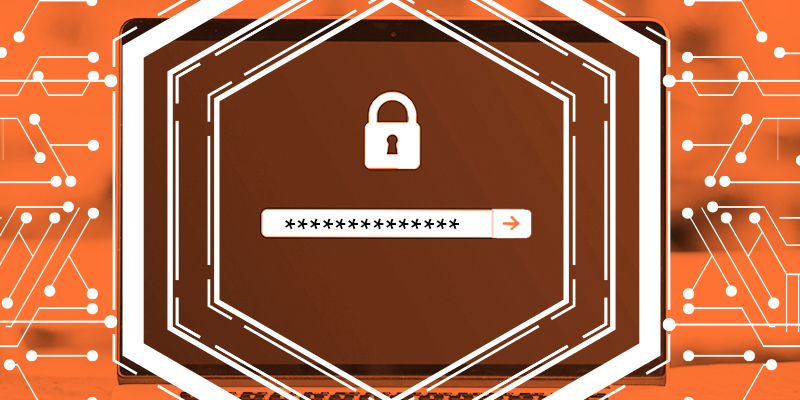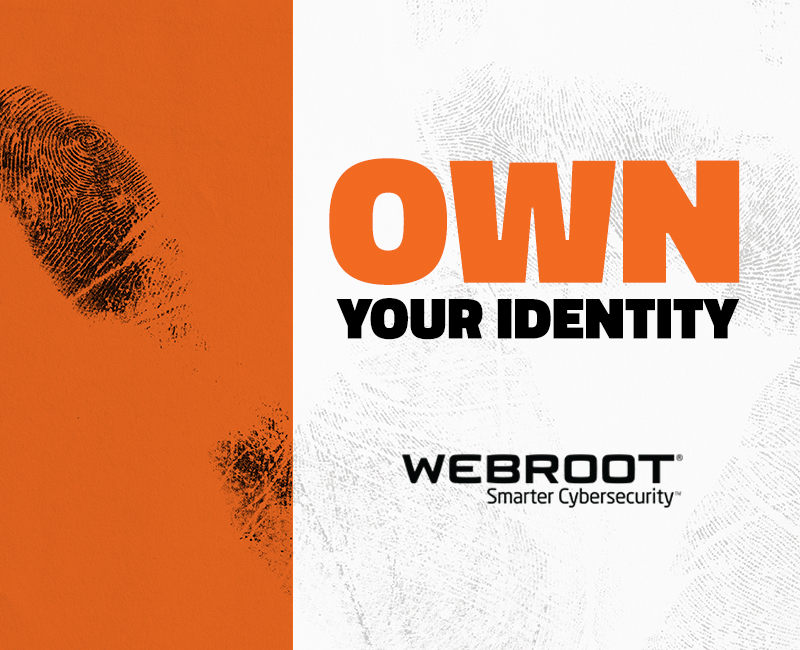An update from the CEO
Over the past eight years, I’ve been honored to work alongside a world-class group of professionals—including the Webroot team, and our growing network of partners and customers. Our security community has grown into something special, and powerful. With tremendous gratitude for that experience, I am sharing my plan to retire as CEO of Webroot. Mike Potts will be joining Webroot as CEO and a member of the Board of Directors on September 25, 2017, and I will continue to serve on Webroot’s Board of Directors.
As I look back and think about the highlights of the past 8 years, a few stand out for me:
- Introducing the first “next gen” endpoint solution, built in the cloud and leveraging contextual threat analysis for greater efficacy against zero day threats than was possible before.
- Establishing Webroot as a highly innovation company and expanding our portfolio from endpoint protection to network protection, threat intelligence and security awareness training.
- Winning the prestigious Thomas J. Edison Award for Innovation, the first ever awarded to a security company.
- Building out a team of almost 600 talented Webrooters across the world, including outstanding teams from our acquisitions of BrightCloud, PrevX, CyberFlow Analytics and Securecast.
- Achieving #1 status in the major markets where we compete, like consumer retail in North America, and managed service providers and embedded threat intelligence worldwide.
- Growing our customer base to millions of consumers, over 9,000 managed service providers and 210,000 businesses.
- And, achieving with the close of this last fiscal year 14 consecutive quarters of double-digit growth.
What stands out most for me, though, is the extraordinary people. My years at Webroot were the most satisfying of my 52 years in business, and I’ve never worked with a finer group of people—employees, customers and partners alike. We created a uniquely collaborative relationship with our customers and partners, which led to not only the highest satisfaction rates in the industry, but also a great source of inspiration for how our products could evolve to solve new problems. The success of Webroot is our shared accomplishment.
It’s time for me to pass the baton, and I am confident Mike Pott’s is the right person to lead Webroot going forward. Mike’s passion, vision, and industry knowledge paired with the talented team in place means you have just seen the beginning of innovation from Webroot. I can’t wait to see what this team accomplishes in the coming years and hear about all of the successful implementations from our customers and partners.
Thank you,
Dick Williams
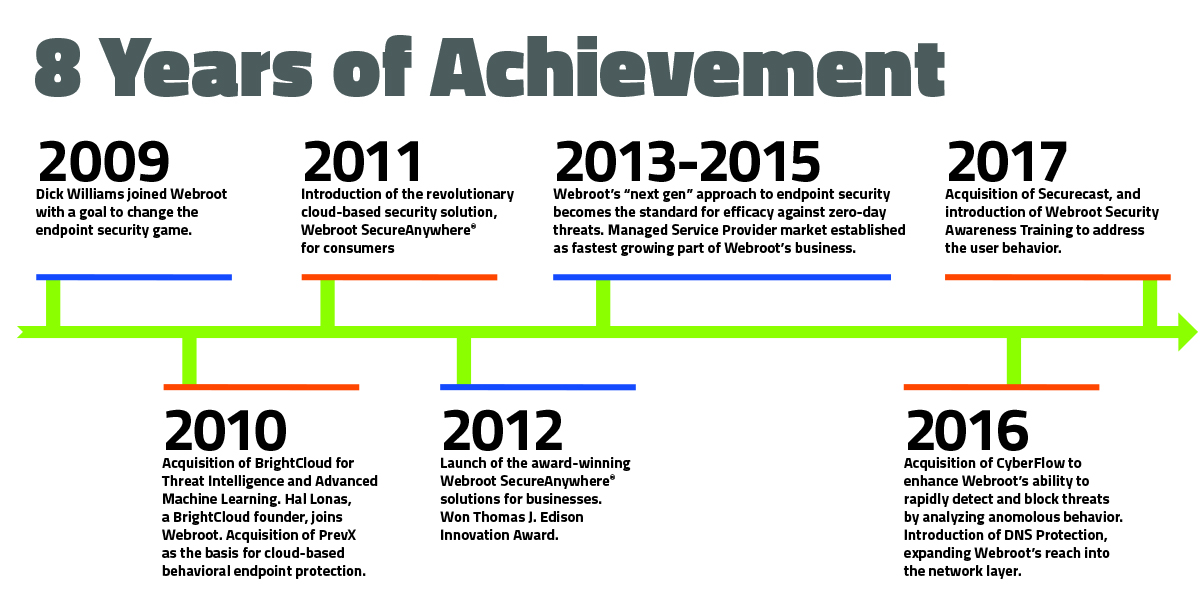
Why You Should be Using a Password Manager
From streaming entertainment to social media to our online bank accounts and software, we are inundated every day with the need to create and remember new passwords. In fact, one study revealed that Americans have an average of 130 online accounts registered to a single email address. And what are the chances that those 130 passwords are each unique and difficult to crack? Slim to none.
You’ve probably heard about the infamous Yahoo breach that came to light last year, in which hackers stole the credentials and other sensitive information of more than 1 billion users. For people who used their Yahoo password for other sites, those accounts were also compromised.
Unfortunately, many people admit their passwords are less secure than they should be. See for yourself:
So how, exactly, can we all be expected to create and remember an average of 130 unique passwords?
The best solution available today, offering both convenience and security, is a password manager.
What exactly is a password manager?
It is a type of application that can address all the above issues. Password managers come in the form of lightweight plugins for web browsers such as Google Chrome or Mozilla Firefox and can automatically fill in your credentials after saving them in an encrypted database.
The major benefit of using a password manager is that you only need to remember a single master password. This allows you to easily use unique, strong passwords chosen for each of your online accounts. Just remember one strong password and the manager will take care of the rest.
Avoid these common password security risks:
- Typing passwords to login each time can be dangerous in itself. Malicious keyloggers designed to secretly monitor keystrokes can record your passwords as you type them. (You can eliminate these with good antivirus software.)
- Remembering multiple passwords, especially if you have carefully picked a password that is complicated. Most people tend to use the same or similar passwords for different accounts, which means that if one password is exposed, criminals can log into all those accounts.
- Storing passwords in a document or writing them down, which creates a very high risk of being affected by a breach or simply losing the information.
For more videos related to cybersecurity and staying safe online, subscribe to our YouTube channel.
UPDATE: The Webroot Password Manager upgrade is here—now powered by LastPass, the most trusted password manager! Get access to quality-of-life features including the password vault, access on ALL devices, auto-fill and save, emergency access, and more.
Current users, learn how to switch to LastPass here: https://wbrt.io/577b2
New users, learn how to set up your LastPass account here: https://wbrt.io/snbmz
Cyber News Rundown: Edition 9/1/17
The Cyber News Rundown brings you the latest happenings in cyber news weekly. Who am I? I’m Connor Madsen, a Webroot Threat Research Analyst, and a guy with a passion for all things security. Any more questions? Just ask.
IRS-Themed Ransomware Using Old-School Tactics
Over the past week, researchers have discovered a new ransomware variant that attempts to impersonate both the IRS and the FBI, similar to the FBI lockscreen malware that was popular several years ago. By tricking the victim into opening a link to a fake FBI questionnaire, the ransomware is downloaded onto the machine and begins encrypting. Fortunately, both the FBI and the IRS are taking great measures to alert possible victims and to catalog any scam emails that are being sent out.
History Repeats Itself at UK NHS District
Back in May, the UK’s National Health Services fell victim to a large WannaCry ransomware attack. While most of the districts have since regained full functionality, the district of Lanarkshire has once again been targeted. A cyberattack on its staffing and telephone systems left the district with only emergency services for several days. This event just reinforces the importance of updating security on critical systems before an attack, and even more so after one as devastating as WannaCry.
Worldwide Spread of Android DDoS Malware
A recent study found that hundreds of thousands of Android mobile devices had been compromised by a malware variant designed to turn them into a large-scale DDoS botnet. With hundreds of apps carrying the malicious code, it’s unsurprising that devices in more than 100 different countries have been linked to this WireX botnet, which was recently dismantled by security researchers from several different companies.
Hurricane Harvey Brings Out Scammers
As donations have poured in to support the victims of Hurricane Harvey, so too have stories of scammers looking to profit from their tragedy. Many fraudulent non-profit websites have already been registered and are seeing an exponential increase in traffic, along with large donations that will never reach the intended recipients. Phone scams have also been on the rise, with people impersonating relief organizations and other assistance groups to get information and money from victims of the storm.
Payment Records Compromised at UK Tech Retailer
In more tough news for UK citizens, officials at CeX have confirmed unauthorized access to payment records of nearly two million user accounts on their online site, webuy.com. Fortunately for many of the site’s users, CeX stopped storing customer payment information back in 2009, so most of the cards on file are likely expired. Customers have been advised to watch their accounts for any suspicious activity in the coming months, and to change their passwords as a precaution.
Cyber News Rundown: Edition 8/25/17
The Cyber News Rundown brings you the latest happenings in cyber news weekly. Who am I? I’m Connor Madsen, a Webroot Threat Research Analyst, and a guy with a passion for all things security. Any more questions? Just ask.
UK NHS Database Exposes Over 1 Million Patient Records
During the past week, a breach was discovered in patient booking system SwiftQueue, which is widely used by several National Health Service (NHS) facilities. The database may have contained patient information for up to 1.2 million UK citizens, though the actual data has yet to be fully examined. Even worse, attackers now claim they have found additional SwiftQueue vulnerabilities and are in possession of all 11 million records stored by the company.
Booking Provider’s Data Found in Public Data Dump
Researchers recently discovered a large customer data dump in a publicly-facing Amazon S3 bucket. The data in question belongs to Groupize, a groups and meetings solution, and contains everything from customer interactions to full credit card information used to book hotels and other meeting spaces. Fortunately for anyone who has used the service, the data was properly secured within a week of the discovery.
Phishing Site Hosted on .fish Domain
A new phishing site using a .fish domain was found in the past few weeks. .Fish is one of many generic top level domains (TLDs) created several years ago. While the site itself appears to have been compromised, rather than created maliciously, it was issuing redirects to an actual phishing page disguised as a French banking cooperative in Vietnam. This is the second .fish-hosted phishing site in the past 2 weeks; the first was a Netflix phishing attack that emerged just one week prior.
U.S. Navy Considers Possible Cyberattack to Blame for Recent Collision
Over the last few days, U.S. Navy officials have been trying to determine the exact cause of a large ship collision in the busy shipping lanes near Southeast Asia. Although there is currently no conclusive evidence of hacking in the ship’s systems, a steering failure occurring without initiating the backup procedures created for this very scenario raises some eyebrows. This is not the first occasion that a ship was purposely sent off-course by external interference, and officials are right to be concerned, as these are major vehicles of war.
Nearly All Hacked Companies Running Unpatched Systems
A new report by the Fortinet cybersecurity firm shows that 90% of all companies hacked in the last year were running unpatched software and network policies. Even worse for many of these companies: suitable patches had been available for months, which could have prevented the attacks, had they been implemented in a timely fashion. With a continually increasing number of attacks on unpatched system protocols, it’s crucial that companies ensure they’re taking sufficient steps to update infrastructure as part of their regular security measures.
Your Identity Is Yours. Here’s How To Keep It That Way.
Have you ever been out with friends, had a little too much to drink, and left your credit card in a bar? Or maybe you thought you’d stowed your child’s social security card safely away in your desk drawer, but now you can’t find it. It may seem like losing these items is just an inconvenience, but the reality is that simple slip-ups like these can spell disaster for you and your family.
According to NBC News, more than 15 million Americans were victims of identity theft last year alone, up 16 percent from 2015. And stolen credit or social security cards are just a couple of the ways identity thieves can invade your personal life, dealing major blows to your finances and even your reputation.
Unfortunately, the culprits behind identity theft can be anyone from family, friends, and neighbors to sophisticated cybercriminals.
“Most cybercriminals use automated tools to steal thousands, if not millions, of IDs at a time. Ensuring you have unique passwords for financial sites, avoiding public Wi-Fi in hotels and airports, and keeping backups of all your data are all important steps toward protecting yourself from identity theft. Finally, having a current, layered antivirus solution that not only protects against malicious files like ransomware, but also prevents phishing attacks and protects online browsing can close the loop on cybercriminals trying to do your and your family harm.”
-David Dufour, Senior Director of Engineering, Webroot
We recently took to the streets of Denver to get a feel for how average Americans are staying safe from identity theft. Their responses were not so surprising.
How to protect yourself from identity theft
With these types of malicious acts making the news more frequently than ever, why are people not taking more precautions with their identity? That’s not something we can answer, but we can give you a few tips on how to be safer with your identity:
- Don’t send or receive private data over unsecured Wi-Fi networks or in public spaces.
- Keep personal data encrypted when stored on devices.
- Safely store (or destroy) physical documents that contain your private information, from credit cards to mail.
- Freeze your credit. It sounds scary, but it isn’t. Freezing your score makes it harder for a criminal to open a new credit card account or take out a loan in your name. The FCC provides details on their website.
- Know your credit score. There are many free services that help you keep track of your credit score, and make sure nothing phishy is going on.
- Make sure all your devices are installed with up-to-date cybersecurity that protects you from all knows threats in real-time.
If you’re looking for more ways to protect yourself from identity theft, the federal government has a few more tips.
What if I’ve been a victim of identity theft?
The Federal Trade Commission has a useful one-stop-shop to help you repair the damage and recover from identity theft. The task may seem daunting, but at the end of the day, your identity is yours—and it should stay yours.
Cyber News Rundown: Edition 8/18/17
The Cyber News Rundown brings you the latest happenings in cyber news weekly. Who am I? I’m Connor Madsen, a Webroot Threat Research Analyst, and a guy with a passion for all things security. Any more questions? Just ask.
Scottish Parliament Successfully Stops Cyberattack
Officials in the Scottish Parliament have issued a statement regarding a brute force attack on their IT infrastructure. Fortunately for the many members of parliament, their already impressive cybersecurity protocols had recently been further improved in the wake of similar attacks over the last few months. On top of the added security measures, a forced password reset was issued to all staff members, simply to improve any weak credentials.
Phony Banking Domains Distribute Malware
While security precautions continue to expand, the malicious campaigns that try to evade them are growing even faster. By creating multiple fake banking domains, scammers are now attempting to spread Trickbot, a banking Trojan, to thousands of unsuspecting customers. Online banking customers should remain cautious of sites that require banking credentials, especially if visiting them from a link from their email.
Web Service Providers Move Away From the Daily Stormer
In the aftermath of the recent demonstrations and violence in Charlottesville, Virginia, the public has fervently demanded that The Daily Stormer, as a high-traffic site for hate speech, be taken down. After GoDaddy took down the domain, the site attempted to use Google’s hosting services, which were quickly terminated. After being shunned by numerous hosting sites, The Daily Stormer has relocated to the Dark Web.
Additional Chrome Extensions Exploited
Over the past week or so, researchers have found a growing list of compromised Google Chrome extensions. The extensions in question have been used to redirect normal internet traffic to malicious sites, and even alter ads that users see on a site. By using Javascript alerts to gain user permissions, these extensions have successfully diverted nearly 1 million users to their redirected landing pages.
Hacker Unlocks Vehicle for Desperate Family
After waiting several months for a replacement key to be shipped from Japan, the owner of a now keyless Toyota minivan called on a hacker for help. The hacker was able to reprogram the car to allow the owner to use a new key. While this case is a white hat story with a happy ending, it calls attention to the security protocols that could be circumvented by a less altruistic character.
Locky ransomware rises from the crypt with new Lukitus and Diablo variants
NOTE: This blog post discusses active research by Webroot into an emerging threat. This information should be considered preliminary and will be updated as more data comes in.
New variants of Locky—Diablo and Lukitus—have surfaced from the ransomware family presumed by many to be dead. After rising to infamy as one of the first major forms of ransomware to achieve global success, Locky’s presence eventually faded. However, it appears this notorious attack is back with distribution through the Necurs botnet, one of the largest botnets in use today.
Webroot protects against Diablo and Lukitus
We first detected Diablo on August 9, 2017, and Lukitus yesterday, August 16. Since then, we’ve seen activity hitting Windows XP, Windows 7, and Windows 10 machines in the United States, United Kingdom, Italy, Sweden, China, Botswana, Russia, Netherlands, and Latvia.
How are these attacks deployed?

As with previous versions, the initial attack vector is through malspam campaigns in which phishing emails contain a zipped attachment with malicious javascript that downloads the Locky payload.
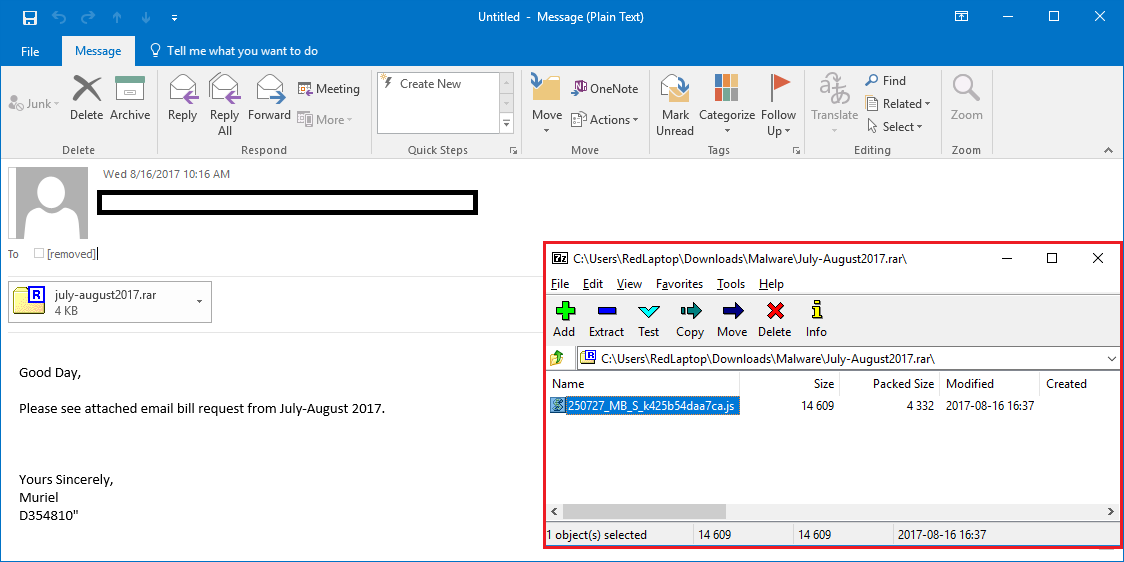
Once the Locky payload is dowloaded, it encrypts the users’ files with “.diablo6” and “.Lukitus”, respectively.
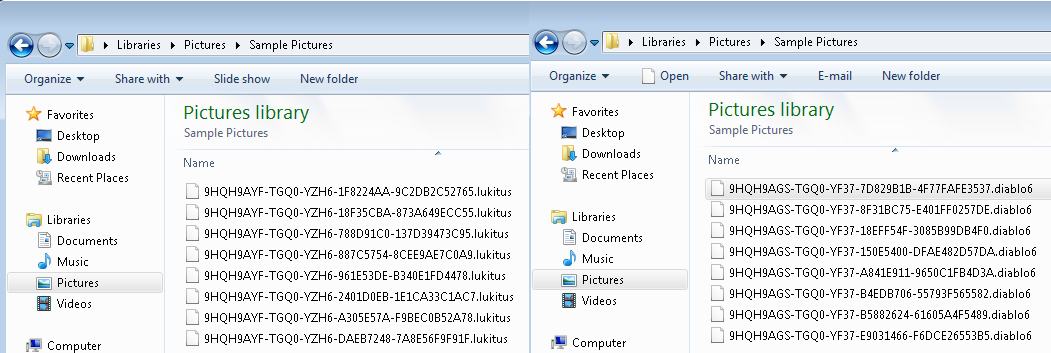
Then it changes the desktop background and provides the rescue pages “diablo6.htm” and “lukitus.htm”, which are identical.

Following what’s been standard for years, the Locky ransomware instructs the user to install a Tor Browser, then navigate to your unique .onion address to pay the ransom.
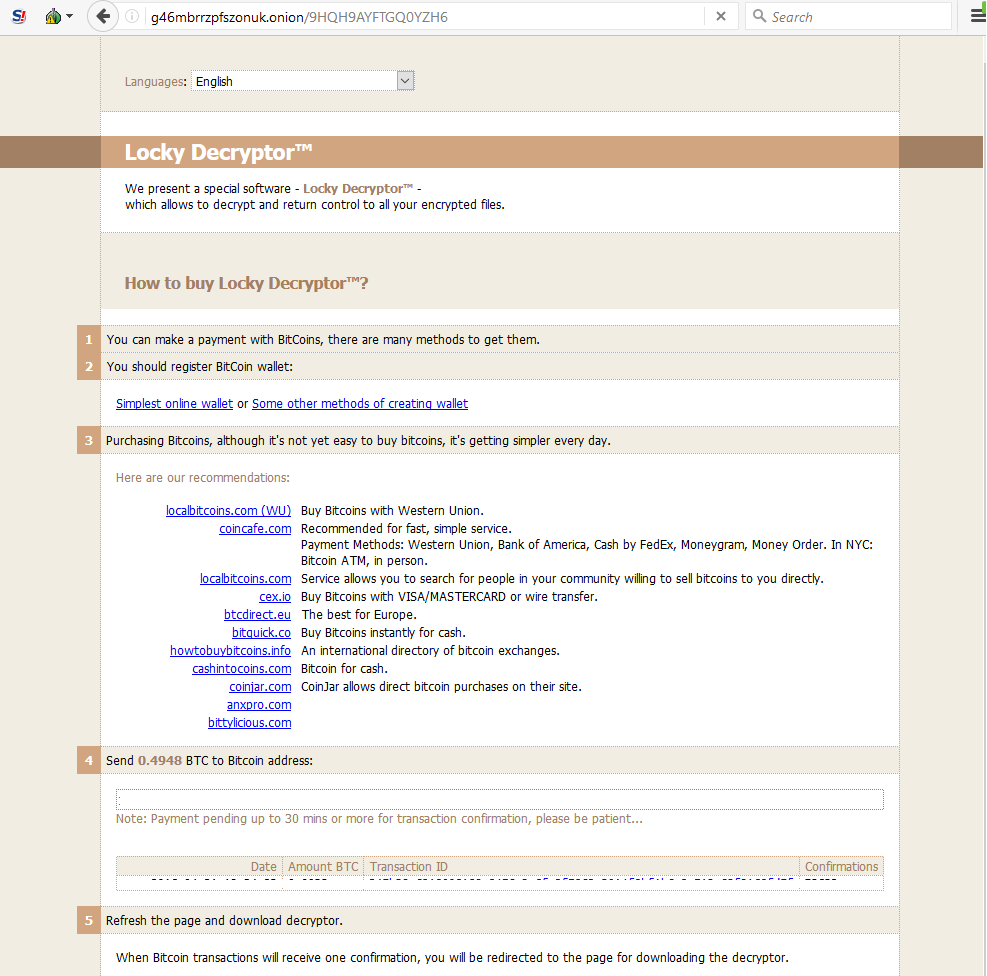
There is currently no available decryption tool that will work, other than paying the ransom to obtain the decryption keys. Although Webroot will stop this specific variant of Ransomware as a Service in real time—before any encryption takes place—don’t forget that the best protection in your anti-ransomware arsenal is a strong secure backup. You can use a cloud service or offline external storage, but remember to keep it up to date for personal productivity and business continuity.
For best practices for securing your environment against encrypting ransomware, see our community post.
Initial list of MD5s analyzed by Webroot
NOTE: This exhaustive list is current as of publication of this blog. We will continue to update internal lists but will not publish further additions until such time that we deem it necessary.
2E1A3A5F24AA6D725405E009949E6F0B
7821C8F49773EC65B9DFE8921693B130
544BC1C6ECD95D89D96B5E75C3121FEA
A2AEC1429D045355098355CAA371F23E
4779E473C909104272853EA1313BEE37
D7D22FFB1E746C20828422DA5CDF93DA
5245A7FA2351212EBF8257C55536791D
FE1CBC72C53AE7D8D16A5C943B5769FC
EA1832B7539BE8F265C08C0075CCB4DE
ACEA79268714A4752E3BF22161B90471
4BAA57A08C90B78D16C634C22385A748
0816080383AB3F33FEB9B6B51E854C73
0E05A7B9F1F2A19B678D2D92ABF70E47
F83DDED266CA056804BCC60EB998FA6C
4938F1D87F52473BC13C88498D6FC7AF
4BAA57A08C90B78D16C634C22385A748
F83DDED266CA056804BCC60EB998FA6C
8009E4433AAD21916A7761D374EE2BE9
E7E5628F67CB2FA99A829C5A044226A4
4BAA57A08C90B78D16C634C22385A748
3506AB24DB711CF76F95F89B4990981A
ECDAFEF0E38D2B5F24B806AF4FD54CC6
89ED8780CAE257293F610817D6BF1A2E
E613CF78955A4C1D8732B0ECB202CAEC
45021A1A159DEA9952AD3494B8D49852
993608B9AEA2B351E4BA883FEE8916B0
FBE9106026AF42CD24AB970ED718A579
23CCA546A85B5CAA12441F7F4C6B48E4
01DA2F592A64F2ABA0986319436177A5
96E214BAF7F26B879BAF0D87D830F916
040C537F575ED64374AB7F38F27E03F1
D3C856485116A09CAA37D867561BD634
BA82AA75BF6FC2549049877ACE505A24
9C6F2921CE536393198C605C15AE8C91
941CDFF8A86E56D11FCAF25CF7C2129B
A Day in the Life of a Chief Information Security Officer
Over the last couple of years, I’ve written and spoken regularly about the changing roles of the Chief Information Security Officer (CISO). And what better way to demonstrate the many skills the position requires – from the technical to the managerial – than journaling a day’s work. A CISO has to be the strategic partner his or her company needs to manage risk. So for anyone who may be curious, here’s what a day in the life of a CISO looks like.
Hit the ground running
05:46 – Time to get up. Traffic is pretty heavy driving into work, so I have to leave early. As I rise, I check my phone for new emails. Then I check my calendar… it’s going to be a busy day.
06:42 – I pull into Starbucks. I need my venti Pike and a hot morning bun to help me wake-up for the day. As I wait for my coffee, I’m already thinking about my meetings and reading through emails. I learn that we need to triage an issue with Webroot’s SEIM vendor that prevents Webroot employees from accessing certain URLs.I need to speak with the team about tuning our email gateway to stop flagging certain types of email attachments.
07:27 – After making it to the office, I grab another cup of coffee as I walk to my office to check email and read cybersecurity news articles I’ve flagged.
08:10 – After I finish reading email, I prepare for a meeting with my team at 08:30.
- We’re currently transitioning from one fiscal year to the next, so I want to review with my team what we have budgeted and go over projects that have been funded. I want them to have some context about what we will be working on, what security controls we need to mature and I want each of my team members to volunteer to help manage a project with the project manager.
09:46 – Time for a quick meeting with my Deputy. I work in a satellite office in San Diego, but I’ll be at headquarters in Colorado in a couple weeks, and I want to plan some team meetings.
- As a CISO, it’s important that I mentor my team and spend time one-on-one with its leaders. As the role of cybersecurity has matured, much of we do is now woven throughout the business, and I believe it’s critical that my team develops the skills it needs to relate to non-technical stakeholders.
10:31 – As I put together a 3-year strategic roadmap to help my organization achieve its goals (ISO 27001 and GDPR certification), I seek out another point of view from my CISO mentor. Even I need assistance at times.
- As a CISO, you must continually challenge yourself to learn about innovative technologies, new cybersecurity skills, or new management skills. I will never know everything, and I can’t expect my team members to be active in the cybersecurity community and grow their professional skills if I don’t do the same.
Working lunch
11:54 – I’m meeting with a local cybersecurity start-up for lunch. They’ve developed technology for a scenario-based testing platform that evaluates and establishes a risk baseline for an organization. I’ve followed this start-up for several years, and now that they have funding I want to see what changes they’re making to their platform.
- It probably goes without saying that as a CISO, I find new technologies fascinating, and I continuously look to improve the security suite I have built for my organization. It’s my responsibility as the senior security executive for Webroot to be familiar with innovative technologies and to look at new possibilities that will provide strategic value to my company.
13:41 – Reviewing notes from the meeting with my CISO mentor. He provided me with some spider graphs, which we used to annotate a security risk scorecard. I want to use this data to put together a slide deck that outlining the projects we will work on over the next 36 months, split into two phases.
- It’s critical to have a strategic roadmap of projects, backed by a risk scorecard that annotates our current state risk baseline. That way, as my team proceeds to work with our business units to update technologies, improve work processes, and complete ISO compliance requirements, we can watch our risk scorecard change. As the CISO, this will enable me to demonstrate the business value of cybersecurity by reducing our risk exposure and maturing our operations.
15:00 – My team and I are meeting with a threat-hunting vendor, planning to do a “proof of concept” for their technology. We requested a demonstration and a Q&A session.
- I’m continuously working with my team to improve how we view threats to our organization. We want to have a real-time view into how data enters the enterprise, how it is used, how it is accessed, and when and where it exits the organization. Throughout that lifecycle, we want visibility from a single platform to log, alert, analyze, hunt, and remediate when required.
16:47 – After reviewing late emails, I call my boss to check in.
After business hours
18:17 – After fighting through traffic on the way home, I changed to go on a four-mile power walk. As I walk, I use my voice recorder to review meetings and events I had today and lay out ideas for future projects. I also look for articles to review tomorrow, and remind myself to register for the CISO roundtable dinner next week.
20:05 – After having dinner with my family, I retire to my home office to write for an hour. I am in the process of writing my second book for CISOs, and I must dedicate a specific period of time to writing ever day so that I stay on track.
21:32 – Now I’m catching up on Krebs and Cyberwire. This is when I really feel like I’m catching up on what’s going on in the cybersecurity community. I found some articles on interesting technologies, so I shared a couple of them with several of my peers at work.
22:30 – Time to call it a day. Shutting down the office now, and heading upstairs for bed.
01:28 – Woke up with a spontaneous idea to write an article about 24 hours in the life of a CISO. I jot down some ideas to send to our Public Relations department in the morning.
05:56 – The alarm goes off, and I hit the snooze button for ten minutes. Time to roll over, check my email and start another day…
At the end of the day, I’d like to thank Webroot for giving me the opportunity to be that valuable information security partner I talked about earlier. I’d also like to tell those veterans who are transitioning and looking for a new career, the cybersecurity community needs you. We’d be honored if you came to serve with us.
Cyber News Rundown: Edition 8/11/17
The Cyber News Rundown brings you the latest happenings in cyber news weekly. Who am I? I’m Connor Madsen, a Webroot Threat Research Analyst, and a guy with a passion for all things security. Any more questions? Just ask.
Solar Panel Vulnerabilities Could Lead to Hot Issues
A recent study on several of the top solar panel manufacturers checked for any exploitable vulnerabilities in their products. One outcome of the study found that if a large volume of solar panels were exploited at once, it could cause catastrophic problems for the main power grid of an entire country. If such an attack took place, it’s very possible millions of people would be in for a hot mess.
Ships’ Technology Returning to Familiar Shores
In the past few years, sea-faring ships have been enhancing their GPS capabilities to keep track of their fleet anywhere in the world. Unfortunately, this technology is also quite vulnerable to cyberattacks, which could land a ship in troubled waters—stranded hundreds of miles from shore. As these attacks increase, many shipping companies are turning back to older radios as backups to keep in touch with each other and associates on land.
Dutch Car Leasing Company Leaks Driver Info
Within the last week, researchers have discovered a vulnerability in LeaseWise, a type of software used by dozens of car leasing companies. While the leak was shut down after only 24 hours, officials have stated that nearly 100,000 customers’ data may have been exposed in the data breach.
iOS Users are Twice as Likely to get Phished
Over the past few months, researchers have been compiling the statistics for mobile device attacks on iOS® and Android™ phones. Although many users still consider Apple and iOS products to be invulnerable to attacks, the numbers showed nearly twice as many phishing attacks against iOS devices over their Android counterparts. Even more concerning: the majority of these phishing attacks are taking place outside of email services, where they can get around the usual spam filters and other security measures.
Blizzard Players Left Cold During Summer Games 2017
On August 9, players of the widely-popular Blizzard game, Overwatch, have been stuck staring at login screen issues with no resolution in sight. As the Summer Games 2017 event kicked off, a large number of Blizzard servers went down, leaving hundreds of players worldwide (understandably) annoyed and demanding answers. Unfortunately, Blizzard has yet to resolve the issue, but is keeping users apprised of their progress toward a resolution on the company Twitter page.
Q&A with QA Engineer Sopall Ngim
When I started prepping for this interview, I wasn’t entirely sure what a quality assurance (QA) engineer did on a day-to-day basis. However, in a world where STEM (Science Technology Engineering and Mathematics) has become the buzzword du jour, I knew this important technical role was something more and more companies will need in the future. To get more insight, I sat down with Webroot QA Engineer Sopall Ngim to talk about the importance of a quality assurance engineer in a cybersecurity organization.
Webroot: Hi, Sopall. Let’s start by talking a bit about yourself and your role at Webroot.
Sopall Ngim: I started my career in medical device research and development, and then a former co-worker convinced me to change careers and become a QA engineer. I have been working in the software testing field ever since. What I like about testing is that it gives me the opportunity to work with the whole product/system (end-to-end) instead of specific components within the system. That is, figuring out whether or not it will work in a customers’ environment. Because most of the time, we don’t have all the customers’ specific conditions and environments, test engineers need to take a thinking-outside-the-box approach to figure out what needs to be tested and how. Also, because testing the system in every customer’s environment and condition is not realistic, I like the challenge of designing tests that require the least amount of effects, but get the most test coverage.
Sounds like you are a bit of a puzzle solver at work. Going back further, how did you get interested in tech in the first place?
My interest in science and technology came about when I visited the Boeing 747 assembly plant in Everett Washington at 19, seeing machines move different sections of the airplane together into precise locations so that they could be joined got me curious about how the system was controlled, and how it worked.
I must admit, Sopall, I’m not sure what you do! What is QA?
The Software Quality Assurance/Testing role works as part of the product delivery team to ensure the release software meets end users’ expectations. We ensure that the software will work in the customers’ environments and help them with their daily tasks. As part of the product delivery team, a test engineer is responsible for designing tests that will fully validate the functionalities of the software being tested, then running those tests.
Take us through a day in the life.
As part of a product delivery, QA Engineers work with their internal team members to:
- Review user stories and requirements to ensure they are well understood by everyone on the team
- Attend design discussion and review
- Design and develop tests to verify the functions and features included in the release
- Perform tests and develop automation test scripts
- Communicate any defects found during testing to the team, and see that they get resolved in a timely manner
- Communicate test statuses to the team
Have you ever found any surprising— or unexpected but awesome—outcomes while testing?
No one specific situation that sticks out, but one thing I learned throughout my career is that software should be developed to solve customers’ problems or to help them become more efficient in their daily tasks. End users won’t buy software just because it uses new technology or has a flashy Graphical User Interface (GUI).
What’s the biggest lesson you’ve learned from working in the field?
Merely gaining a solid understanding of the technologies used to develop a product is not enough to become a good test engineer. To become a good software test engineer, one needs to have solid domain expertise in the business of software development, and a solid understanding of how customers will use the software or service.
Any advice to students in your field?
To become an effective test engineer in a client-server application system, you need to have a solid understanding of network communication across the internet, as well as an in-depth knowledge of the relational database. Also, with today’s competitive market, a fast go-to-market timeline is very important. Companies want to release products frequently, which means test automation becomes increasingly important. Instead of trying to learn every existing programming language, pick one and become an expert in it.
Great advice. Seems we all need to be an expert in some aspect of our field these days. Switching gears, tell us about working for Webroot?
Prior to joining Webroot, I worked for several other companies ranging from a startup to a well-established company. When searching for new job opportunity, I always try to look for a company that:
- Develops products or services that help make people’s daily lives better
- Values everyone’s input and contribution
- Provides everyone with opportunities to learn new skill sets
- Encourages employees to balance their work and life
Webroot has all of the above. Testing is not an afterthought like in most companies. Test engineers are part of the process from start to completion. We’re involved with designing and releasing decisions. Every team contributes to the approach and has a say in how to implement the feature being worked on.
Wonderful advice for anyone looking for a career, not just a job. Thanks, Sopall!
Are you interested in a career like Sopall’s? Check out our careers page at www.webroot.com/careers. You may be particularly interested in our openings for DevOps, Quality Engineer or Sr. Software Engineer, Windows in San Diego, or our open DevOps, Quality Engineer position in Broomfield, CO.
Cyber Threats to Small Businesses, a CISO’s View (Pt. 2)
Last week, we covered the results of our survey of more than 600 IT decision-makers at medium-sized companies in the U.S., U.K., and Australia. Participants shared valuable insights into their cybersecurity understanding and preparedness, and I gave my own analysis of what the numbers indicate.
Quick recap
I’ve been in the security industry for more than 20 years, and the survey results brought to light some discrepancies I think are worth further consideration. To review:
- 96% of those surveyed believe they are susceptible to cyber threats.
- 80% use third-party IT security resources (mixed-use IT and security teams).
- 29% think they are ready to handle a cybersecurity-related incident.
If 80% of the businesses we surveyed outsource their cybersecurity to trusted MSPs, shouldn’t all 80% feel confident they have the resources to manage a cybersecurity breach? Why did just 29% of respondents report they feel ready to handle that incident?
To me, these numbers indicate many companies are paying for security resources, but still need to train their internal teams to improve confidence that they could triage an incident successfully. So, what can businesses do to reduce their risk of exposure and prepare themselves for a cybersecurity-related incident?
Three quick processes to help small businesses:
- Cyber Hygiene: get back to basics. Approximately 80% of the risk facing your organization from the majority of cyber threats can be minimized drastically if you take care of the basics correctly and continuously. You need antivirus and antimalware on all of your endpoints, and you need to make sure they stay up to date. Patch all corporate asset applications and operating systems in a timely manner, particularly critical security patches. (The industry standard is normally 2 weeks after issuance to allow for field testing.)Don’t forget to back up all critical data securely and keep it offsite. Test your backups at least once a quarter. Include a strong firewall for your network, segment your network to protect critical operations, and turn on the personal firewall software on your desktop computers. Below are some useful links to guide you in this process:
- S. Cert list of resources to assist small businesses in recognizing their cybersecurity risks: https://www.us-cert.gov/ccubedvp/smb
- S. Federal Trade Commission list of 10 practical lessons for small businesses: https://www.ftc.gov/tips-advice/business-center/guidance/start-security-guide-business
- Training: don’t hate, educate. For small businesses to manage the impact of a cyberattack, they need to train. I recommend using a good threat intelligence feed to help train IT and security personnel on the threats facing the business and then have them meet periodically to go over the procedures to manage a real-world incident. The company needs to build good muscle memory into its incident response team, even if these types of requirements have been contracted out to an MSP. In the latter case, small businesses should work with their MSPs to determine how their in-house staff should support the MSP during an incident.
- Cyber Insurance: i.e. cover yourself. After a small business has assessed their risks, mitigated, and done as much planning as possible, they should look into cyber insurance policies. The policy would likely be different for each company, depending on the services they require. Remember the costs I listed above. The largest costs post-incident are notifying all affected customers and engaging forensics/data recovery services. Having insurance goes a long way toward helping your business recover quickly and cleanly in the event of a breach.
Today’s online landscape is incredibly dynamic and changes every day. To manage risks in the face of increasing changes and challenges, we recommend small and medium businesses partner with MSPs that can provide critical security services, and work with their in-house teams on education and business continuity strategies. Businesses should also maintain security basics correctly and on a continuous basis, while doing extensive worst-case scenario planning. By taking these types of steps, we can ensure a safer, more secure online experience for all of our respective businesses and customers.
Cyber News Rundown: Edition 8/3/17
The Cyber News Rundown brings you the latest happenings in cyber news weekly. Who am I? I’m Connor Madsen, a Webroot Threat Research Analyst, and a guy with a passion for all things security. Any more questions? Just ask.
Amazon Echo Resolves Security Flaw
Researchers have recently discovered a major security flaw that affects several generations of the Amazon Echo. The flaw itself involved being able to physically access the device to install malware that records conversations, all while retaining normal usability. Fortunately for consumers, only the 2015 and 2016 devices appear to be susceptible; the flaw was fixed for the 2017 production.
New Features Added to Banking Trojan
As more banking customers use their devices to conduct an increasing number of transactions, authors of banking Trojan, Svpeng, have added in a new enhancement: keylogging. After checking the device’s set language, the malware gives itself full administrative permissions and starts propagating itself as the default SMS app for the phone. Once it gains full access, it starts gathering as much information as it can, from messages to contacts to browsed websites, and then contacts its C&C server to pass along the data.
Next Major Broadcaster Breach: HBO
In the past week, officials at HBO have announced that a breach occurred, exposing not only proprietary information, but also several unaired TV episodes and even an upcoming Game of Thrones script. While the company is unsure how it happened, the breach has brought the security of the entire industry into the spotlight.
Third Party Breach Hits Anthem Healthcare, Again
The nation’s largest healthcare provider, Anthem, has spent the last couple weeks notifying nearly 18,000 customers who may have been a part of a recent data breach. The breach comes from a third party insurance company employee who emailed a sensitive document containing Anthem customer’s medical information to their personal email address. While not directly Anthem’s fault, this news comes not long after the company settled on their last data breach, which affected nearly 80 million customers.
German Development Team Hacked
Recently, the Chrome Web Store belonging to German web development team a9t9 was hacked. Along with the initial breach, the team later found that one of their key web extensions had been injected with malicious software, and had been subsequently moved from their account to the attackers’. Unfortunately for anyone using the current extension, a9t9 are unable to deactivate or remove it, as they no longer have control.







